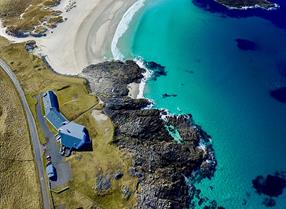Is it safe to swim here? This has to be one of the most common questions you’ll see on social swimming pages and one which I get asked regularly. If you have asked this question you are on the right track to be a safe outdoor swimmer but it’s not a closed question with a simple answer so beware of yes and no answers. Why? Because safety is relative, especially outdoors.
For the most part of the year UK coastal and inland waters are cold. In physiological terms, cold is defined as water under 15 degrees centigrade. We are warm-blooded mammals and entering a cold environment will put extra strain on our bodies that for some, will sadly prove fatal if caution is not taken before entering. This is not scaremongering. It’s a physiological fact. Our heart rate, blood pressure and breathing rate go up involuntarily as soon as we enter cold water. If a sudden immersion happens this can lead to inhalation of water and panic, panic can lead to distress and distress to drowning. Most drownings occur through accidental immersion but a good understanding of physiological responses and external hazards should be considered before entering a cold water environment. You should consider the following before entering the water:
What’s underneath?
Are there rocks, seaweed or reeds? Is it deep? Risk of serious injury, entanglement and deeper can mean colder than expected. Always enter slowly.
Is there a safe exit?
Consider your exit before your entry point. It’s very easy to enter from a ledge or rock but is it easy to get out? There’s a risk of cold-water exposure and panic if there’s no easy exit. Look for gentle sloping areas to allow for gradual acclimatisation and a safe exit.
Am I familiar with the area?
A lack of understanding of tides and currents can lead to being carried further from the shore or downstream. Always check with someone local and if in doubt, don’t go out.
Can I be seen or heard if something goes wrong?
Never swim alone. Be visible to other water users by bringing a tow-float and wearing a bright swim cap. A dry bag tow-float can carry small items such as a mobile phone or whistle to attract attention. It is not a lifesaving device but can offer safety by being visible if something were to go wrong.
Your physiological response to cold water overtakes any swimming ability in outdoor swimming. Don’t be fooled that being a strong pool swimmer will keep you safe. A good understanding of cold water shock, tides, currents and personal safety will save lives, not 40 laps in a 29 degree heated swimming pool. Outdoor swimming is very different to pool swimming.
If you find yourself in trouble, fight the instinct to panic, raise the alarm and float on your back to conserve energy. The RNLI’s Float to Live campaign has saved countless lives. It works! Or you can sign up to Immerse Hebrides popular online Safer Sea Swimming course which starts again in September. Sign up HERE.
Norma MacLeod kindly contributed this blog. She is the owner of Immerse Hebrides, which offers wild swimming adventures, and is an experienced wild swimmer with extensive and in-depth knowledge of the best places to swim in the surrounding waters of Lewis & Harris.













Comments
Comments are disabled for this post.